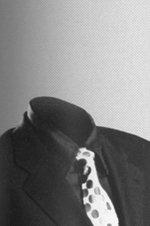Interview with Sommelier Julee Resendez
Jim Clarke: What did you learn about wine working in your grandparents’ vineyards?
Julee Resendez: Every summer I was shipped off to help work in the vineyards, and the whole family would gather for the harvest. So I really saw how grapes are grown and how they respond to the soil and environment. My father was a chef, so the rest of the year, when I wasn’t in the vineyards, I was often helping him in the kitchen. That taught me about food.
JC: What brought you back to wine after your time managing restaurants?
JR: I was always interested in the wine side, but it took a long time before I thought I was ready. I had to learn first. I had great support from my mentors; people like Jean-Luc de Du, Dominique Simon, and Tim Atkins all really encouraged me. After tasting a lot I finally got serious and read everything I could get my hands on. Traveling is also important – getting your hands in the dirt, looking around, and seeing what the vineyards look like. If olive trees are growing down the street, that means something about the climate and the vines. The education part was so much fun, and finally I felt confident enough to really do it.
JC: The restaurant Colors had an international menu, with dishes from all over the world; how did that come through when creating the wine list?
JR: Colors was a chance to create something all my own, but at the same time they had a certain environment they were aiming for. The list is very international, to go with their theme; I couldn’t find any worthwhile Chinese wines, for example, but almost everywhere is represented, within reason. The Italian section is a bit larger, mainly because the investors are Italian.
JC: On the other hand, Aquavit has a very specific, Scandinavian focus; what wines did you find to work best with that menu?
JR: German Rieslings, absolutely – we had so many of them. They pickle and brine everything. Beer also worked well – a chocolaty Porter, for example, and we did some good Sherry pairings. You had to go outside the normal stuff. And if people wanted to try something unusual, we were glad to open it; we didn’t worry about spoilage.
JC: You formed the Vino Vixens last year, a group for female sommeliers; what sort of things does the group do?
JR: Originally we were thinking of getting a tasting group together. Every week we do a different format, but we always touch on history, winemaking procedures, and tasting. It’s 11 girls now, and we try to nurture the person and not just the wine knowledge. We hope to expand it – to bring more wine awareness to girls in college, for example. Also for networking – if someone’s specializing in Italy, then we can refer her when that’s called for, and so on.
JC: You’re consulting now, helping various restaurants develop their wine programs; do you miss being on the floor?
JR: Yes. I like the excitement of a busy shift; it’s like stepping into a hurricane. Hopefully you become the eye of the storm; you look at the room and read it, and know what the guests need before they even become aware of it.
JC: I understand you’re working on a book about wine and its history; what is its emphasis?
JR: It’s a wine education book – the story of wine. I want it to be something you can both dive into and read end-to-end and refer to when you need certain information.






